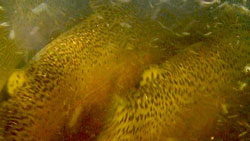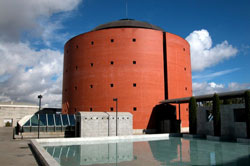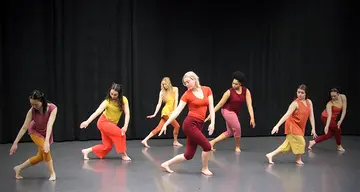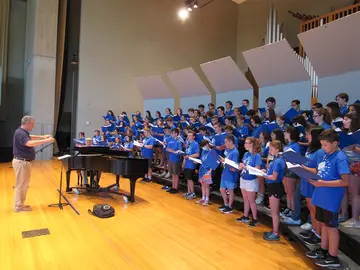Alberto Rey to have solo video exhibition in Spain
By Roger Coda
Alberto Rey, SUNY Distinguished Professor in the Department of Visual Arts and New Media at SUNY Fredonia, will present a solo video exhibition at the Museo Extremeño e Iberoamericano de Arte Contemporáneo (Extremaduran and Latin American Museum of Contemporary Art) in Badajoz, Spain, from May 26 to July 15.
An entire floor of the museum will be dedicated to 10 video projections of Rey’s work, which will include some of his past documentaries as well as five new site-specific videos from his Biological Regionalism Series.
 |
 |
 |
||
|
Primal Connections (clip) |
Moments of Wonder - video still |
Museo Extremeño e Iberoamericano de Arte Contemporáneo |
That series revisits some of the content expressed through artists of the Hudson River School, which was a movement in art that took place in the 1800's. The Hudson River School documented the wilderness around New York and much of the country and included artists such as Henry Inman, Thomas Doughty, Winslow Homer, Thomas Cole and William Chase.
This art movement documented the expanding American landscape for the general public that had little exposure to this new environment. The study of biology, botany, geology and art was popular with residents of the new country. Piscatorial art and nature painting was considered a form of “high art” during the early 19th century.
These art forms are again becoming integrated into contemporary art as the need to rediscover the connection between nature and culture is becoming more apparent. This connection has deteriorated as most of social and economic reliance has moved to urban settings. Though the wilderness has become more accessible, daily lives have little connection to environments or nature.
The Biological Regionalism Series tries to reestablish this connection by introducing paintings, videos, maps and wall plaques that reflect environments that are geographically close to the audience while allow presenting artwork from other regions around the world. The installation creates a connection between the viewer’s home and environments around the world. While the regions investigated are specific, the issues raised are universal.




